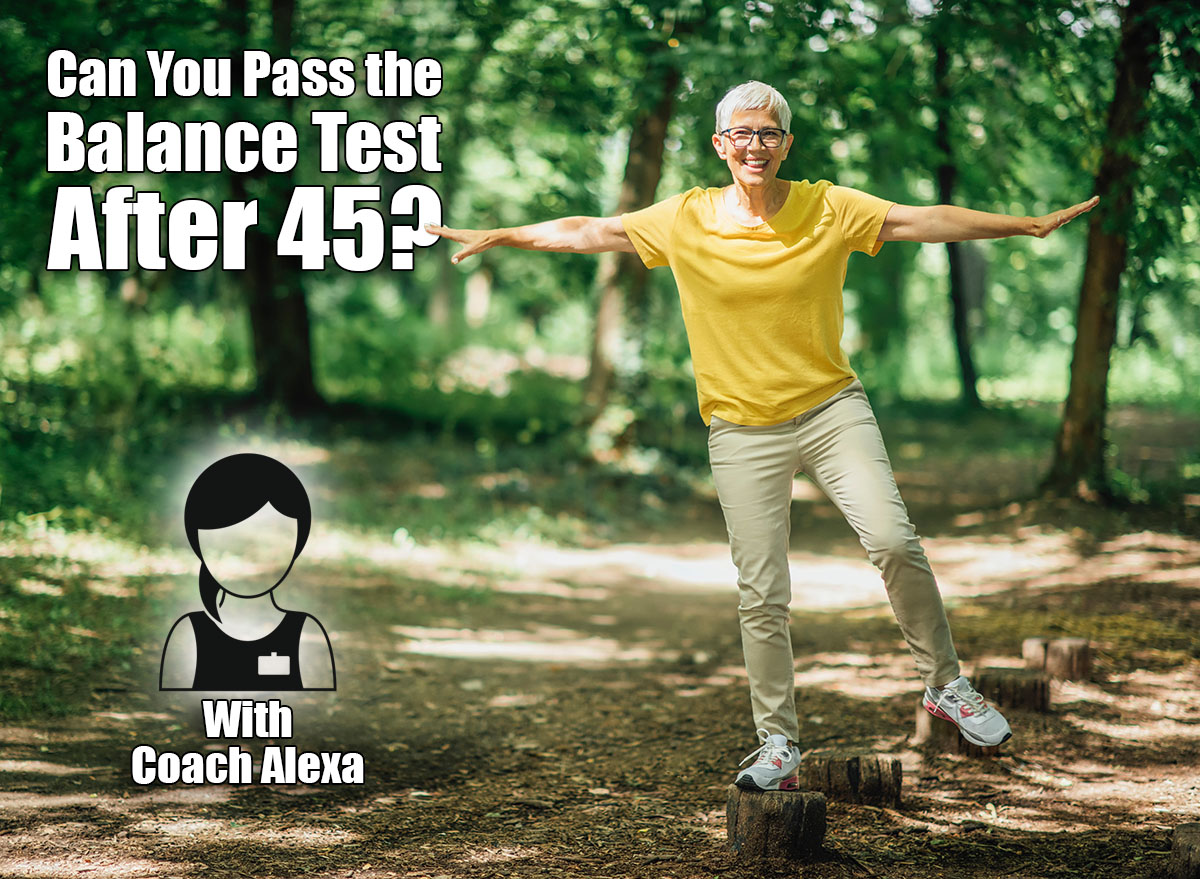Challenging your balance is an easy way to give you a “snapshot” into how your body’s truly communicating and functioning, says Melissa Jean Jarzynski, physical therapist and director of physical therapy at Stable Friendships Foundation. Balance is especially crucial for healthy aging after 45, because when it begins to decline, you become more susceptible to falls and injuries like hip fractures. So, to ensure you’re aging well, we rounded up five balance tests to master, according to experts.
“After age 45, a natural decline begins in the areas of strength, coordination, and mobility. These factors influence the quality and safety of everyday living,” explains Christy Swaid, founder and health coach of Checkered Flag Living & HEAL Inc., world champion woman athlete, and nutrition and fitness expert. “Since falls are the leading cause of injury after age 65, it is wise to bolster your balance as early as possible to support functional aging.”
“There is no rule for how often you should check your balance. However, if you are noticing a decrease in your balance, simply try one of these tests and add them into your current exercise program or activities of daily living,” Jarzynski says. “You can practice the SLS while doing the dishes, practice a sit-to-stand several times before sitting to eat at the kitchen table.”
Single-Limb Stance


“The test looks at how long a person is able to stand on one foot,” Jarzynski explains. “To make this an exercise, simply do this on a regular basis and continue trying to increase the amount of time you can maintain the position.”
- Begin standing tall near a counter or stable surface.
- Balance on one leg while lifting the other.
- Time yourself to see how long you stay balanced before needing to lower your lifted foot or place your hands down.
Tandem Stand Test


- Stand tall near a counter or stable surface so you can place your hands down, if needed.
- Plant one foot directly in front of the other—as close to heel-to-toe as you can be.
- Time yourself to see how long you’re able to balance in this position.
- Then, switch sides.
Sit-To-Stand Test


“Do this test at your own speed and just remember the goal isn’t to do this quickly, it is to do this safely,” Melissa stresses.
- Begin seated at a chair without arm rests, feet flat on the floor.
- Stand up and sit back down repeatedly for 30 seconds.
- Track the number of times you’re able to do this without lowering your hands for support.
Straight Line Test


- Place a piece of two-inch wide painter’s tape in a straight line for approximately 6 feet.
- The goal of this exercise is to walk only on the balanced line. If you’re unable to, simply do the best you can in a safe manner.
The Timed Up and Go (TUG) Method


According to Swaid, the TUG method is another common test of balance.
- Begin seated in a chair, arms folded across your chest.
- Start a timer as you stand up from the chair, walk 10 feet, and then return to the chair.
- Stop the timer as you sit down.
- You should be able to perform this exercise seamlessly in 10 seconds or less.














Leave a Reply